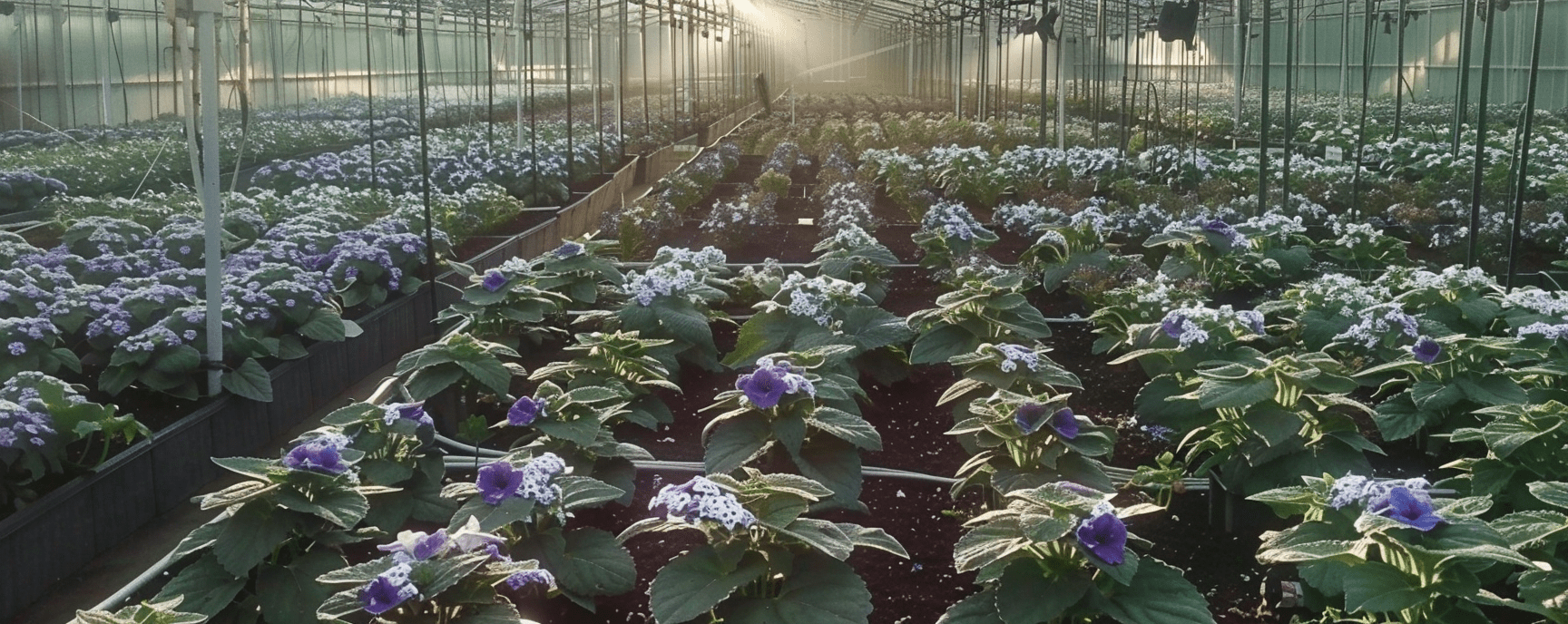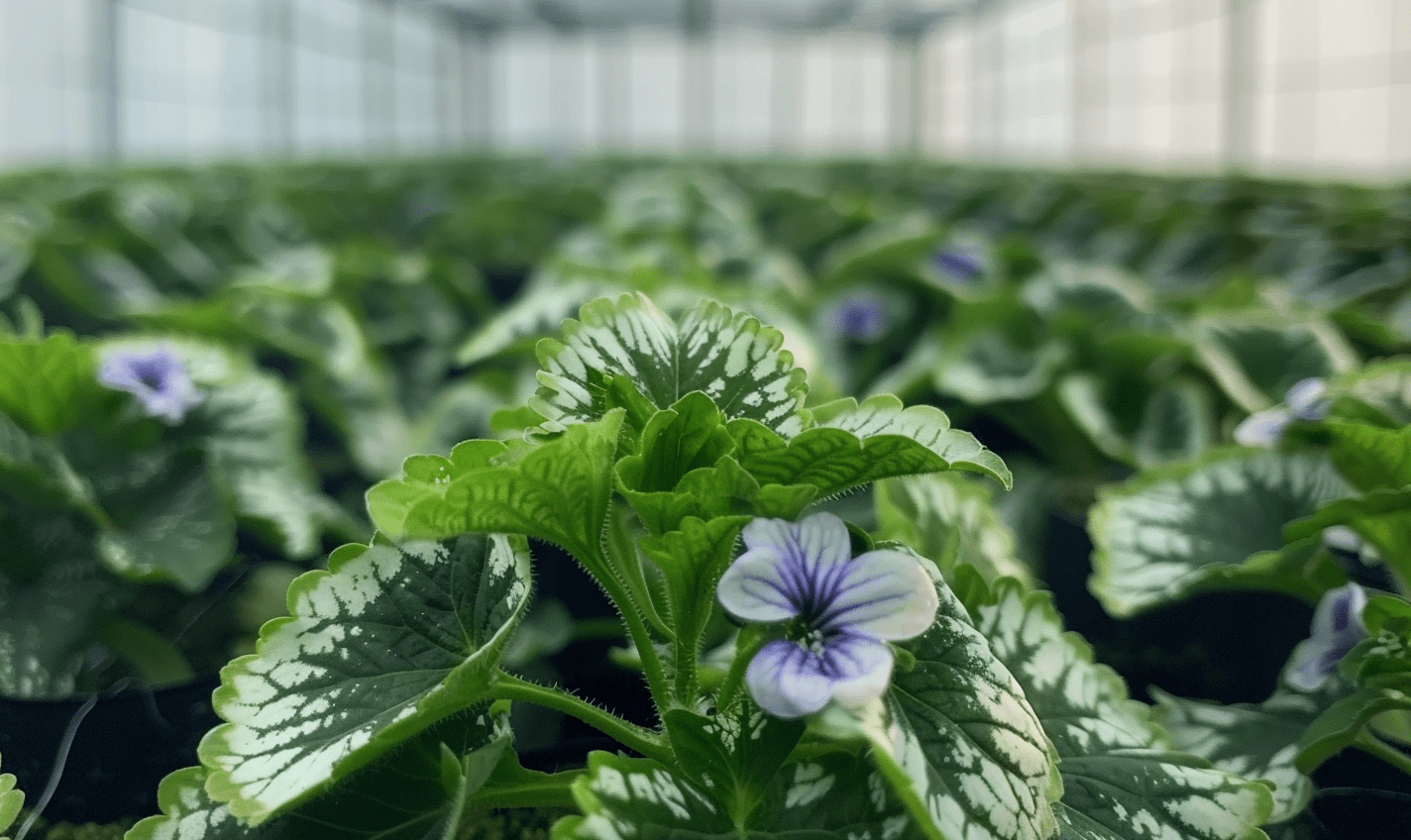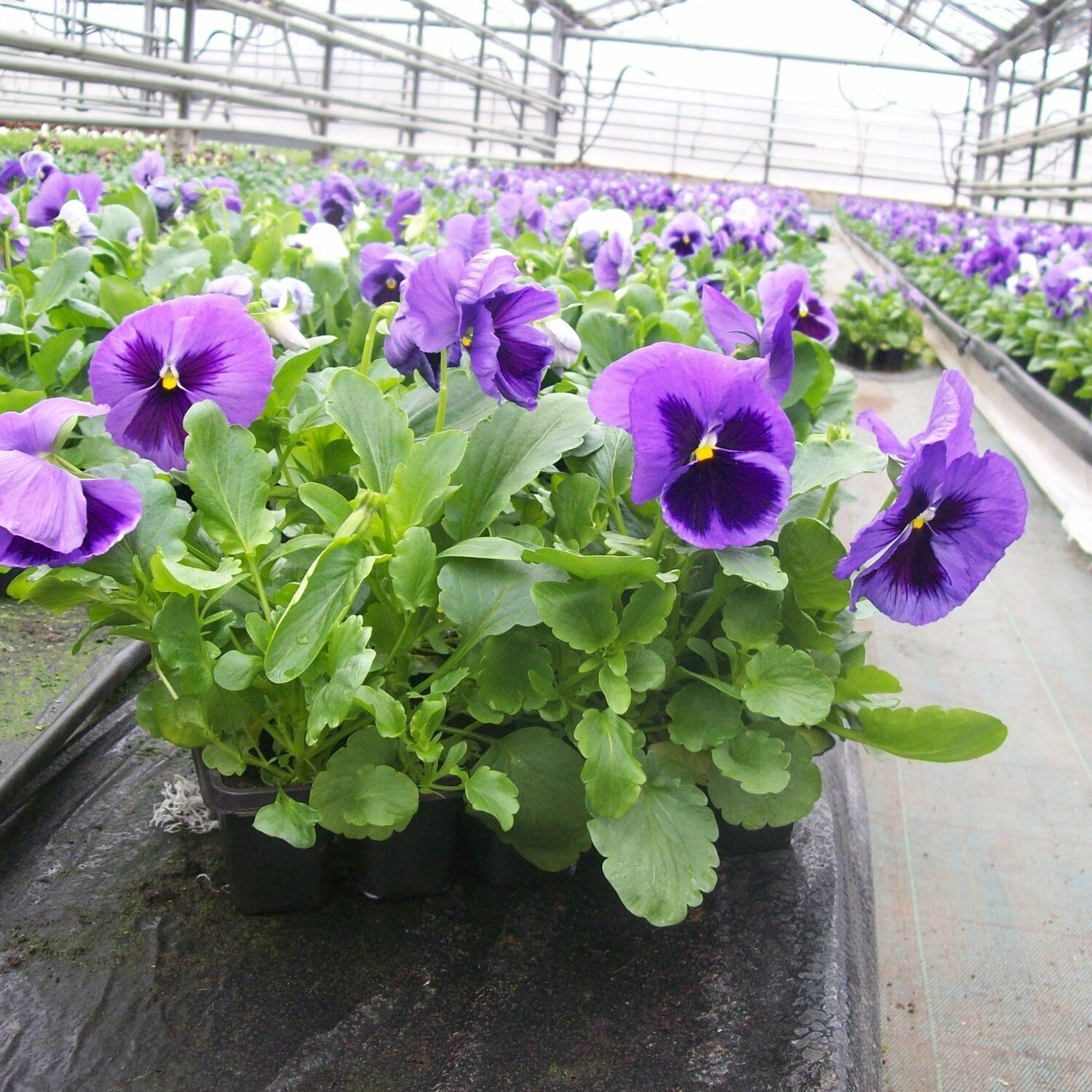How to Grow Violets in a Greenhouse: A Complete Guide

Have you ever dreamed of having your home or garden filled with delicate violets that bloom even in the coldest months? Or maybe you've tried growing them on your windowsill but were met with stretched stems, pale leaves, or no blooms? What if I told you that greenhouse could become your secret weapon for growing these charming plants all year round? This is not a fantasy, but a completely achievable goal if you know how to approach the matter. In this article, I will tell you in detail how to grow violets (Viola) in a greenhouse: from choosing a variety to the intricacies of care. We will analyze each stage with technical data, examples from practice and solutions to typical problems. This guide is created for those who want not only to experiment, but to get a stable result at the professional level. Are you ready to discover the world of violets? Then let's get started!
Why is it a great idea to grow violets in a greenhouse?
Violets — these are small but surprisingly durable flowers that delight the eye with bright colors and graceful shapes. They are popular as ornamental plants for flower beds, pots, and even cut flowers (especially garden varieties). However, in open ground, their life depends on the weather: frosts below -5 °C destroy seedlings, summer heat above +30 °C dries out buds, and excess rain provokes rot. A greenhouse changes everything. Here's why it's worth trying:
- Complete control of conditions. You regulate the temperature (optimally +15–20 °C), humidity (70–80%) and light (8,000–12,000 lux), creating the ideal microclimate for violets.
- Flowering without interruption. With heating and lighting, violets bloom even in winter, when the demand for flowers increases before the holidays (March 8, New Year).
- Less risk. In a greenhouse, the likelihood of damage by fungi (e.g. powdery mildew) or insects (aphids, mites) is reduced by 60–70% with proper prevention.
- Savings and pleasure. One bush produces 10-20 flowers per season. With a density of 40 plants/m² and a price of 5-10 UAH per flower, you can earn 2,000-4,000 UAH from 10 m², and at the same time decorate your life.
NovaTeplica offers greenhouses that are ideal for violets. Polycarbonate 4–8 mm thick with thermal insulation of 1.5–2.0 W/m² K retains heat at -15 °C outside, and the galvanized steel frame (section 20x20 mm) can withstand a load of up to 240 kg/m². Delivery throughout Ukraine — from Ivano-Frankivsk to Kharkov — makes them available to everyone.
Which violets to choose for a greenhouse?

Violets are divided into types: garden (Viola × wittrockiana, or pansies), horned (Viola cornuta), fragrant (Viola odorata). For greenhouses, garden ones are more often chosen - they are decorative, unpretentious and give abundant flowering. Varieties play a key role. Here is a detailed overview of the best options:
- “Swiss Giants”
- Characteristics: height 15–20 cm, flowers 6–8 cm, palette from white to dark purple with an “eye”.
- Features: flowering 10-12 weeks after sowing, requires 12-14 hours of light.
- Pros: large flowers, resistance to temperature changes (+10–25 °C).
- Disadvantages: sensitive to over-watering (soil moisture>80%).
- “F1 Majesty”
- Characteristics: height 20–25 cm, flowers 5–6 cm, single-color or two-color (yellow, blue).
- Features: hybrid, blooms in 9-11 weeks, photoperiod 10-12 hours.
- Pros: compact, abundant flowering (15–20 buds/bush).
- Disadvantages: requires regular feeding (NPK 10-10-10).
- “Viola cornuta Penny”
- Characteristics: height 10–15 cm, flowers 3–4 cm, bright shades (pink, orange).
- Features: flowering in 8-10 weeks, humidity resistant 70-85%.
- Pros: small but numerous flowers, suitable for pots.
- Disadvantages: less effective for cutting.
Technical advice: choose varieties based on photoperiod. Long-day (14-16 hours) varieties grow better in spring, short-day (10-12 hours) varieties grow better in autumn-winter. A beginner's mistake: buying seeds without analyzing greenhouse conditions. The result is weak flowering or elongated stems. Buy from trusted brands (PanAmerican Seed, Sakata) with an expiration date (2-3 years).
When to plant violets in a greenhouse?
The timing depends on the method of cultivation (seeds, seedlings) and the equipment of the greenhouse. Violets can be planted all year round if there is heat and light. Let's look at it in detail:
- Sowing seeds
- Spring: February-March. Flowering — May-June. Soil temperature +15 °C, air +18–20 °C. Suitable for unheated greenhouses in warm regions (Odessa, Zaporozhye).
- Summer: June-July. Flowering - September-October. Ideal for a mild climate without sharp changes.
- Autumn: September-October. Flowering - January-February. Needs heating (100 W/m²) and lighting (120 W/m²).
- Data: germination at +20 °C — 80–90% in 10–14 days.
- Transplanting
- Spring: April-May. Soil temperature +14–16 °C, air +16–20 °C. Seedlings with 2–4 leaves are ready 6–8 weeks after sowing.
- Winter: December-January. Only in heated greenhouses with 12 hours of lighting.
- Example: a gardener from Lviv sowed “Swiss Giants” in March, planted seedlings in May and collected 300 flowers from 5 m² in July.
Technical parameters: minimum temperature at night is +10 °C, otherwise growth slows down by 20–30%. Greenhouses NovaTeplica with polycarbonate 6 mm (thermal conductivity 3.9 W/m² K) and a 1 kW heater provide heat for 10 m² at -10 °C outside.
How to prepare a greenhouse and soil?

Without preparation, even the best varieties will not reveal their potential. Let's analyze each step in detail.
Preparing the greenhouse
- Disinfection.
- Purpose: to destroy pathogens (powdery mildew, root rot).
- Method: wash the walls with a solution of bleach (200 g per 10 l of water, consumption 1 l/10 m²) or potassium permanganate (5 g per 10 l). Then air for 24–48 hours at a temperature of +15 °C.
- Example: a farmer from Chernigov missed treatment and lost 25% of seedlings due to fungus.
- Lighting.
- Requirements: 8,000–12,000 lux for growth, 10–14 hours of light per day.
- Equipment: LED lamps (power 80–120 W/m², spectrum 400–700 nm, height 40–60 cm). One 100 W lamp illuminates 1.2 m².
- In winter: without illumination the leaves turn pale, the flowers become smaller (from 6 cm to 3 cm).
- Ventilation.
- Standard: air exchange 15–25 m³/h per 1 m². Humidity above 85% provokes diseases.
- Solution: vents (10% wall area) or fans (power 40–80 m³/h per 10 m²).
- NovaTeplica greenhouses have adjustable vents (10 cm increments) and an automatic ventilation option.
Soil preparation
- Compound.
- Mixture: leaf soil (3 parts), peat (2 parts), sand (1 part) + 5–10% vermiculite (fraction 2–4 mm) for drainage.
- Alternative: Terra Vita substrate with pH 5.5–6.5 and EC 0.5–0.8 mS/cm.
- Acidity.
- Optimum: pH 5.5–6.5.
- Correction: at pH >6.5 add sulfur (30 g/m², decrease by 0.5 units), at pH <5.0 add ash (150–200 g/m², increase by 0.5 units).
- Test: pH meter (accuracy ±0.1) or indicator strips (price 50–100 UAH).
- Fertilizers.
- Dose: 30 g/m² superphosphate (P₂O₅), 15 g/m² potassium sulfate (K₂O), 3–4 kg/m² compost (NPK 0.4-0.2-0.3).
- Prohibition: fresh manure (causes root burns and growth of foliage instead of flowers).
Example: a gardener from Dnepr added 5 cm of perlite under the soil and reduced root rot from 20% to 3%.
How to plant violets correctly?
Planting technique is the basis for future success. Let's look at the methods in detail.
Sowing seeds
- Seed preparation.
- Problem: small seeds (1 g = 800–1000 pcs.) with low germination energy.
- Solution: soaking in “Potassium Humate” (1 ml per 1 l of water) for 12 hours at +20 °C. Germination increases from 70% to 85%.
- Drying: 15–20 minutes until crumbly.
- Planting diagram.
- Depth: 0.3–0.5 cm (deeper – seedlings are delayed by 5–7 days).
- Distance: between rows 15 cm, between seeds 1–2 cm (after thinning – 10 cm).
- Density: 40–50 plants/m² for pots or flower beds.
- Conditions.
- Temperature: +18–20 °C before germination, then +15–18 °C.
- Humidity: 75-85%. Cover with glass or film (0.1mm thickness) until sprouts (10-14 days).
- Watering: 0.3 l/m² with warm water (+22 °C) from a spray bottle.
Transplanting
- Seedling.
- Age: 2-4 leaves (6-8 weeks after sowing).
- Technique: transshipment with a lump of earth (diameter 4–5 cm), root collar at ground level.
- Spacing: 10x10 cm (100 plants/m² in pots) or 15x15 cm (44 plants/m² in the ground).
Error: dense planting (less than 8 cm between bushes). Plants compete for light, flowers become fewer by 30–40%.
How to care for violets in a greenhouse?

Care requires precision and regularity. Let's look at each aspect.
Temperature and humidity
- Temperature:
- Day: +15–20 °C. Above +25 °C — flowers become smaller (from 6 cm to 3–4 cm), below +10 °C — growth stops.
- Night: +12–15 °C.
- Regulation: heaters (0.8 kW per 10 m²) in winter, shading (50% mesh) in summer.
- Humidity:
- Optimum: 70–80%.
- Above 85%: the risk of powdery mildew increases 4 times. Solution: ventilation (20 m³/h per 1 m²).
- Below 60%: leaves wilt. Solution: trays with water (evaporation 0.3 l/m² per day).
Watering
- Norm:
- Summer: 3–5 l/m² once every 5–7 days (soil moisture 60–70%).
- Winter: 2–3 l/m² once every 10 days.
- Method: drip irrigation (pressure 1 bar, flow rate 1.5 l/h) or under the root (0.2 l/plant). Avoid getting water on the leaves.
- Water quality: pH 6.0–6.5, temperature +18–22 °C. Cold water (+8 °C) causes stress.
Lighting
- Intensity: 8,000–12,000 lux. Below 6,000 lux – flowering is delayed by 2–3 weeks.
- Duration: 10–14 hours. In winter — LED lamps (80 W/m², spectrum 450–660 nm).
- Example: a gardener from Kyiv added backlighting for 12 hours - flowering increased from 10 to 18 buds/bush.
Top dressing
- Growth stage:
- 10 days after emergence: 5 g/m² nitrogen (N) + 10 g/m² phosphorus (P) in the form of “Kemira Lux” (NPK 16-20-27).
- Monthly: 3 g/m² urea for foliage.
- Before flowering:
- 15 g/m² potassium (K) + 5 g/m² phosphorus (P) in the form of potassium nitrate.
- Microelements: boron (0.5 g/m²) for bright petals.
- Example: a solution of “Plantafol” (10 g per 10 l of water, 0.5 l/m²) once every 2 weeks increased flowering by 20% for a farmer from Poltava.
Pruning and shaping
- Purpose: to maintain compactness and stimulate buds.
- Technique: remove faded inflorescences and yellow leaves (cut at an angle of 45°, with a sterile knife).
- Frequency: once every 10-14 days. Without pruning, flowering is reduced by 25%.
Protection from diseases and pests
- Powdery mildew:
- Signs: white coating on leaves.
- Prevention: “Topaz” (2 ml per 10 l of water, spraying once a month).
- Treatment: “Fitosporin” (5 g per 10 l, 0.5 l/m²).
- Aphid:
- Signs: sticky leaves, deformation of shoots.
- Solution: “Confidor” (1 ml per 5 l of water, 0.2 l/m²).
- Slugs:
- Signs: holes in leaves.
- Solution: “Slug Eater” granules (30 g/m²).
Error: overwatering. Soil moisture >80% causes root rot (losses up to 30%).
When and how to collect violets?
The collection depends on the purpose - decoration or cutting:
- Time: 8-12 weeks after sowing (buds are fully opened).
- Time: morning (7:00–9:00), before the heat.
- Technique: cut at a height of 5–10 cm from the ground, at an angle of 45°. For pots – collect faded buds.
- Storage: in water (+4–6 °C) with 0.5% sugar, shelf life is 10–14 days.
- Example: a gardener from Vinnitsa collected 400 flowers from 10 m² during the season, cutting them in the full opening phase.
Typical problems and their solutions
- Pale leaves.
- Causes: low light (<6,000 lux) or nitrogen (N <3 mg/kg).
- Solution: increase lighting to 10,000 lux, add 3 g/m² urea.
- No flowering.
- Causes: heat (>25 °C) or short daylight hours (<10 hours).
- Solution: shading (40% mesh) and 12 o'clock illumination.
- Root rot.
- Reason: poor drainage (water stands for >6 hours).
- Solution: 5 cm layer of vermiculite (fraction 2–4 mm).
Example: A farmer from Sumy added drainage and reduced losses from 15% to 2%.
Why are NovaTeplica greenhouses your best choice?

Violets need a stable microclimate, and NovaTeplica guarantees it. Models from 2x3 m (6 m²) to 5x10 m (50 m²) with polycarbonate with a density of 0.7 kg/m² and UV protection (service life of 10 years). The frame can withstand winds up to 25 m/s, installation - 1 day. Delivery - from Zhitomir to Kherson. Example: a 3x6 m greenhouse for 20,000 UAH paid for itself in a season.
Conclusion: your violets are waiting for you!
Growing violets in a greenhouse is a combination of knowledge and care. Choose a variety, create conditions, follow the recommendations - and your flowers will shine. Don't be afraid to try: every mistake is a step towards mastery. Start today, and soon your greenhouse will become a flower paradise. Questions? Write in the comments - we'll figure it out together. Good luck and bright violets all year round!





